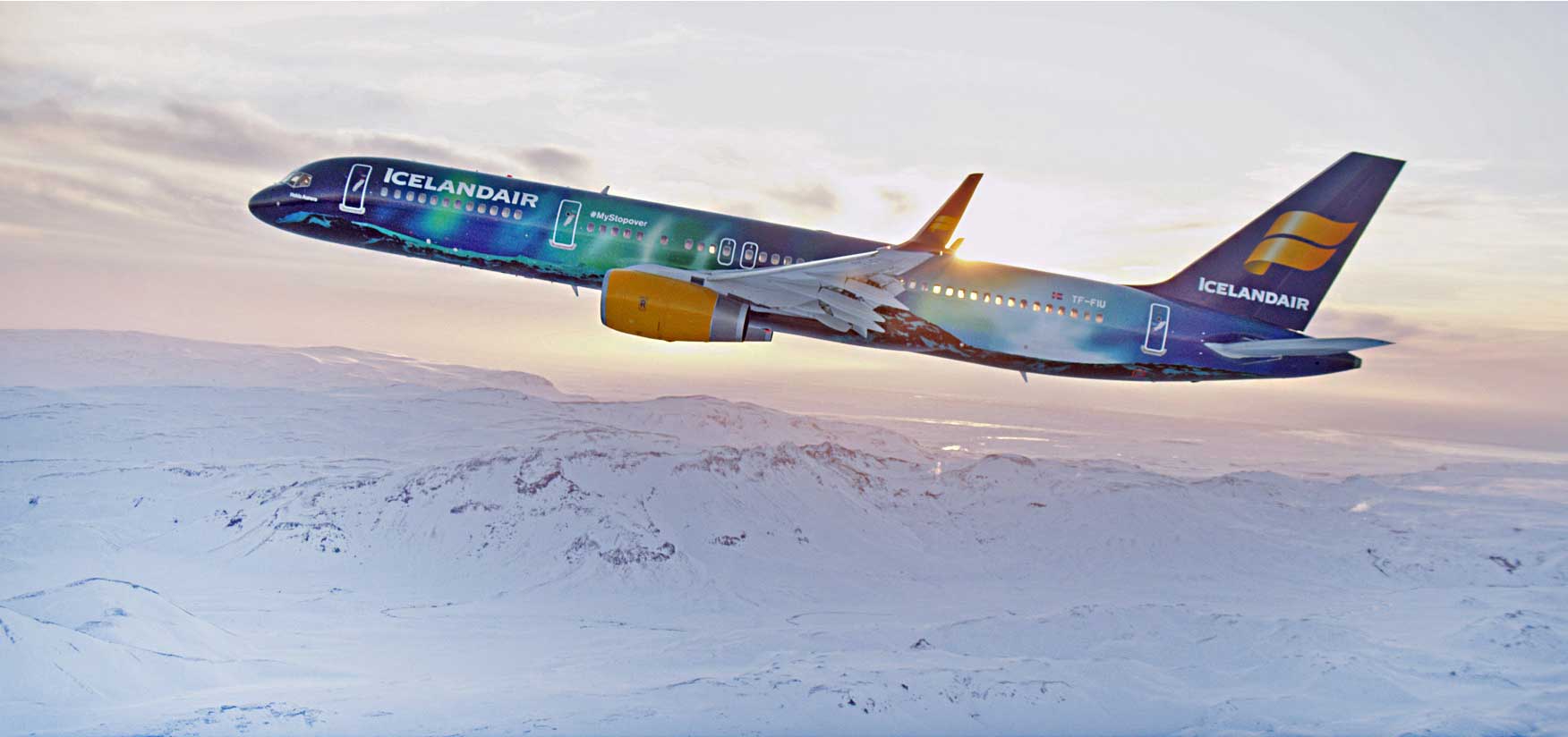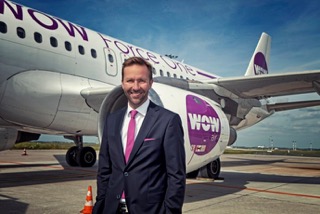Spotlight on Iceland: Cool Airlines Keep the Land of Fire and Ice Hot
Share

APEX Insight: Iceland-based airlines have a unique proposition to offer prospective flyers: the Northern Lights, volcanoes and stopovers. Icelandair and low-cost carrier Wow Air are finding that leveraging these natural assets is paying off.
In collaboration with KeflavÃk International Airport, Iceland’s two leading airlines, flagship carrier Icelandair and low-cost carrier WOW Air, have helped boost the island nation’s tourism industry through clever marketing and business strategies which make the most of the country’s natural assets.
As a result, Iceland’s tourism industry, an essential part of the country’s economy is now even larger than fishing which has been Iceland’s leading industry dating back as far as when vikings Ingolf and Leif caught their first cod. “The number of foreign visitors to Iceland more than doubled between 2010 and 2014, when nearly one million people visited – not bad for a country with a population of 320,000,” the Financial Post reports. KeflavÃk International Airport forecasts a 16 percent increase in passengers in 2015 with 4.5 million visitors expected to pass through its terminal.
Iceland’s longstanding flagship carrier, Icelandair reported an increase in passenger numbers of 22 percent in May of this year. Year-to-date, Icelandair has enjoyed an increase in passenger demand of 18 percent with 933,635 passengers traveling with the airline so far this year, compared to 794,528 by the same time last year. The airline also operates a chain of Icelandic hotels. Occupancy so far this year has been 74.7 percent, an increase over last year of 4.3 percent, despite a slight dip in May of -1.1 percent.
KeflavÃk International Airport forecasts a 16 percent increase in passengers in 2015 with 4.5 million visitors expected to pass through its terminal.
Icelandair plans to expand its fleet with two new Boeing 767s, to replace existing 757s. “We are planning to build up the infrastructure in Iceland so we can take on more tourists in the future,” Icelandair Group CEO Björgólfur Jóhannsson has said. The airline has reported six straight years of profit, with an increase in net profits of $66 million in 2014, and increase of 18 percent over 2013. The airline anticipates high profits again for 2015, but CAPA warns that the airline’s cost structure is sensitive to a rise in fuel prices.
Icelandair has made highlighting Iceland’s beauty, and encouraging visitors, integral to its design and marketing strategy. Its Hekla Aurora B757 gives passengers a taste of changeable northern lights, using specially programmed LED mood-lighting display in its cabin, with special livery painted to match. Last year, Icelandair released a cabin safety video which promoted Iceland as a destination, featuring cabin instructions projected on images of the island’s stark natural beauty.
Stopover Land
Iceland’s competitive low-cost carrier, WOW Air, bases its entire business model on encouraging stopovers, offering low cost options to flights between North America and Europe that require a hub connection at KeflavÃk. “By using Iceland as a stopover hub, we can offer transatlantic flights at a much lower cost,” WOW Air’s CEO and sole owner, Skúli Mogensen, has said.

WOW Air is expanding its fleet with A321 jets, destined to operate 20 hours per day on a Berlin-Reykavik-Boston route.
Icelandair has also introduced a stopover plan, encouraging passengers to take an extra 48-hours on their crossing over the Atlantic to enjoy everything Iceland has to offer.
And airlines outside of Iceland help to contribute visitors, with easyJet serving eight destinations from Keflavik, Delta adding six weeks to its flight schedule this summer, Vueling providing a connection to Rome, and Lufthansa offering service to Frankfurt and Munich, the airport reports.
Of concern to all Icelanders, is managing this booming sector responsibly, to preserve the unspoiled beauty of the place for future generations. “It would be a horrible mistake if we, in a short-sightedness, or in a gold-rush mentality, would simply make everything wide open – rush as many of the people as we possibly could in the short-run – if that would ruin in the long-term the health of these destinations,” Mogensen says. “We need to have long-term thinking.”


